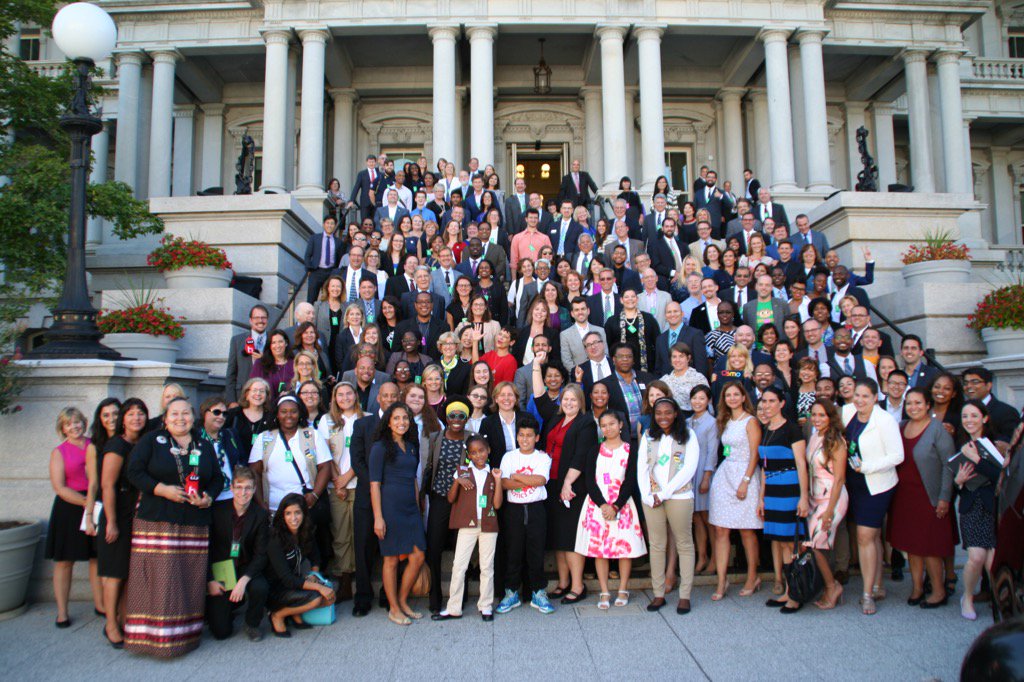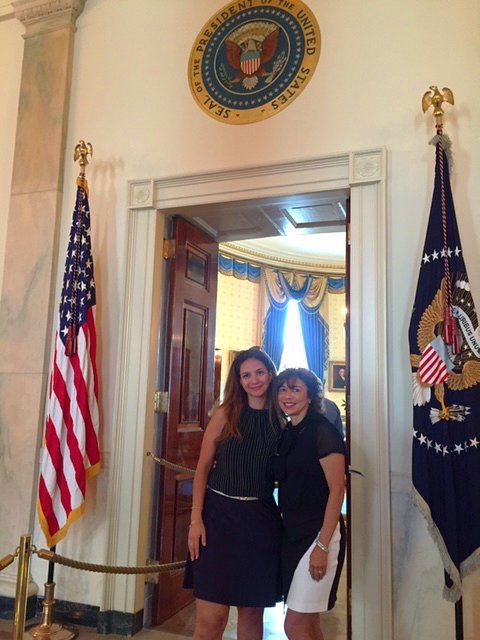Written by Carla Foster
“Hard fun.” In her tribute to the great Computer Science Educator, Seymour Papert, Joy Buolamwini of the MIT Media Lab was referencing Seymour’s contention that everyone likes hard challenging things to do. His phrase for this was “hard fun,” a phrase he first heard from an elementary schooler in an underprivileged neighborhood in San Jose, California, right here in our backyard.
There we were, Thais and I, sitting in the auditorium at the White House Summit on Computer Science For All in Washington, D.C. A few weeks earlier, we could not have imagined that we would be here. But based on our collaboration with our friends at NCWIT in the development of our STEM-based entrepreneurship curriculum BizMovie, we were recommended to the White House. We responded to their inquiries and told them about BizMovie and our latest entrepreneurship curriculum that incorporates HTML coding. BOOM! — we received an invitation to the White House to participate in the first #CSforAll Summit. Honestly, I was doubtful at first. I figured they were inviting thousands of people and making us think we were special. So I inquired and, well, 150 attendees and even fewer invitations extended. We were special after all.
I learned a lot about what people and organizations all over the country are doing to democratize access to Computer Science education and was reminded of why it matters so much. More specifically, I saw striking similarities between these educators’ approach and how we at BizWorld think about entrepreneurship education. Our experience tells us that our students learn when we DEMYSTIFY, INSPIRE, and BUILD. I heard all of these themes at the Summit and particularly from the educators with stories from their classrooms.
Our programs de-mystify business and entrepreneurship by making it entertaining – “hard fun,” as the great Seymour said, is a great way to learn. We introduce business in simple terms they can easily relate to. It’s easy for kids to imagine a lemonade or taco stand and we build from there. We inspire them to act by giving them a sense of independence and the ability to be creative. No two teams (companies) make the same decisions or the exact same products. All outcomes are different and there is no “right answer.”
And we build their confidence – they practice doing the things they naturally do best and then learn a few more skills. The “chatty” or “active” kid makes a high powered head of sales and the girl with her head in the numbers all day makes a great VP of Finance. But they both have to be involved in manufacturing, marketing and design. Build.
We learned that there are many organizations that can help us do the CS part of our curriculum even better and we can start by looking to the CSforAll Consortium, a new group of more than 180 organizations which will connect stakeholders. We also feel hopeful that we’ll be able to serve more children with our STEM programs as access to computers in schools expands.
Recently, I was at an elementary school in Richmond, California where over 90% of the student population is eligible for free or reduced rate meals based on their families’s income. There was a boy in one of our 6th grade BizMovie classrooms who seemed to be the brunt of his classmates’ anger based on his constant movement, interruptions, and limited attention span. So it was surprising and heartening to see his teammates reaction when he learned to make movies so quickly and outpaced all his peers considerably. I saw the newfound respect from his team, and more importantly, his pride was visible. There is no question in my mind that both entrepreneurship and CS education can be life changing. And every child deserves to have them.
I am personally committed to having hard fun in my life until I can’t remember what that is. Thanks Seymour for your simple eloquence and thank you White House, for an amazing conference.


